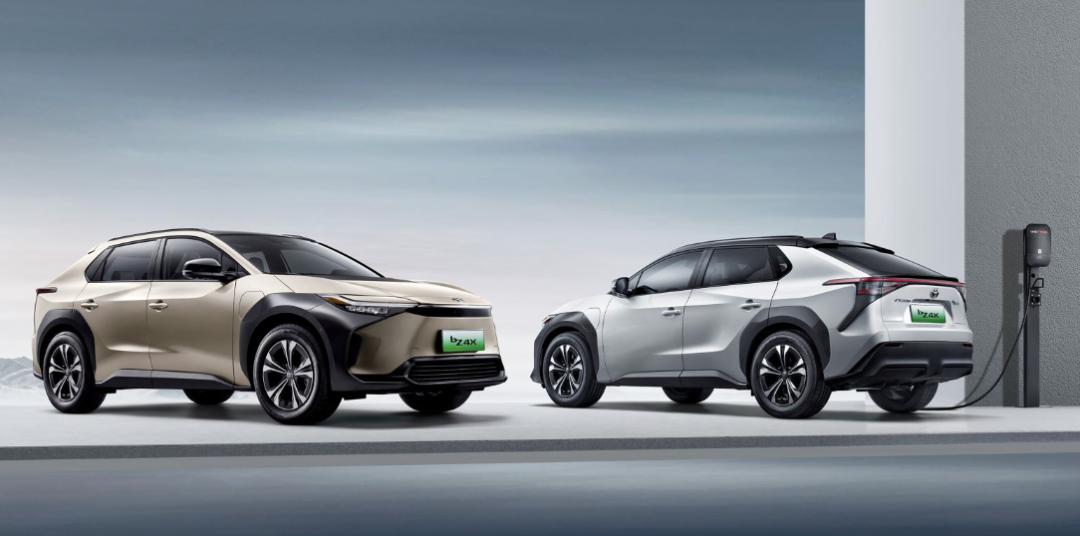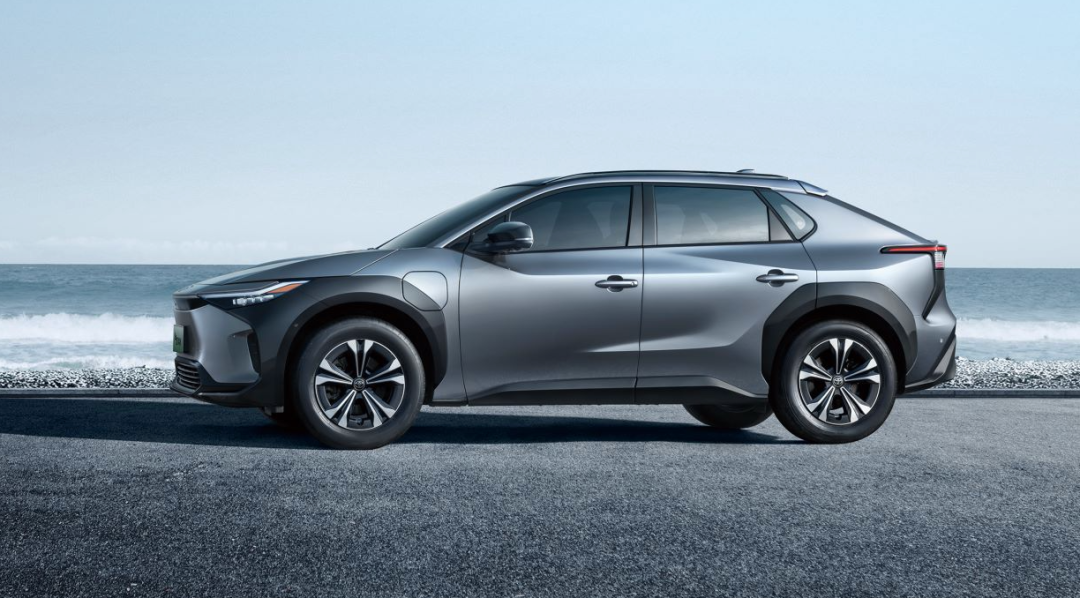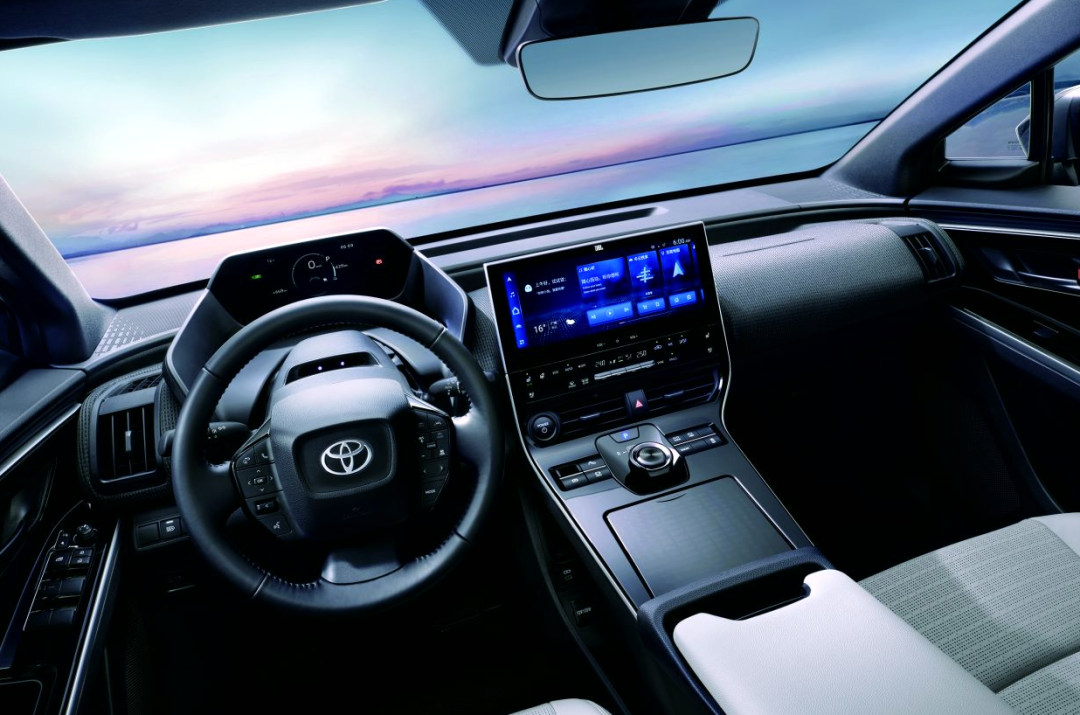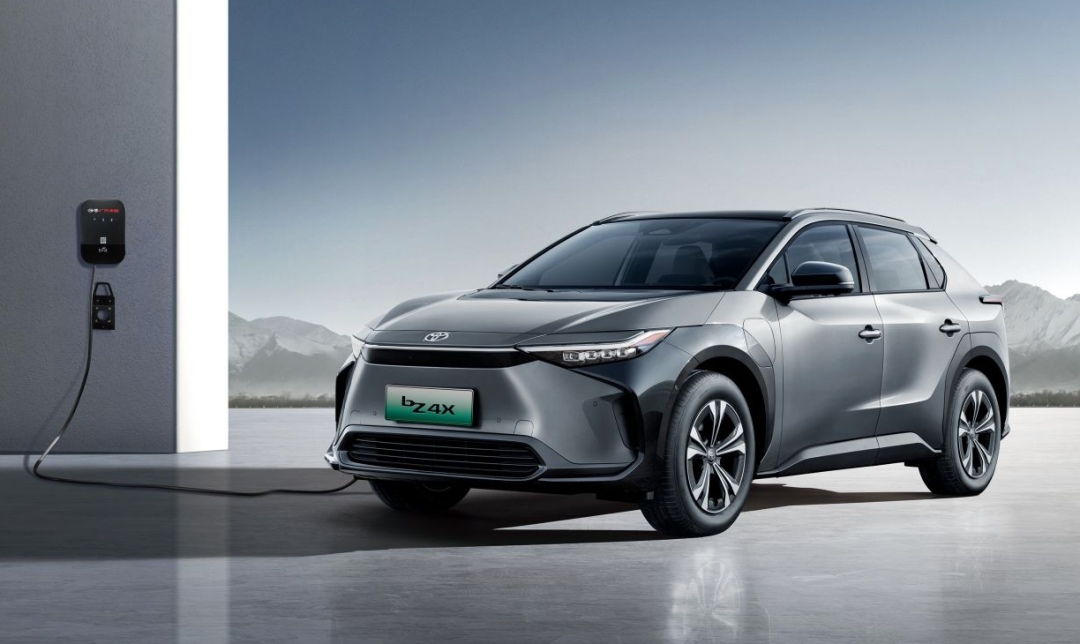| Luo Ji
The Guangzhou-Toyota bZ4X has recently been officially launched at a price range of 199,800 to 287,800 yuan. Compared to the presale price of 220,000 to 300,000 yuan half a year ago, the guide price has been reduced by 20,000 yuan, which has changed my opinion about the car. Earlier, I had little expectation for the bZ4X because it seemed overconfident.

In addition, the Volkswagen ID series, which was once underestimated, has been steadily growing in sales, with a total of more than 16,000 cars insured in August, and the monthly sales of the ID.4 series alone have approached 10,000 vehicles.
Regardless of product positioning or price range, the Guangzhou-Toyota bZ4X is very similar to the Volkswagen ID.4 series. Considering the appeal of the Toyota brand in the domestic market, whether it is a joint venture or an independent brand, the bZ4X should not be underestimated.
Why is bZ4X the first model of Toyota’s pure electric platform?
As Toyota’s first heavyweight model in the electric era, the bZ4X didn’t have a smooth start.
The car was pre-sold in April and didn’t hit the market until October. During this nearly six-month period, the car suffered a setback overseas with a recall, suspension of production, and stoppage of sales, and it was not until October 6th that the overseas production and sales of the car officially resumed. The Guangzhou-Toyota version was launched on the market shortly after the problem was resolved.
However, it was precisely because of these earlier setbacks that netizens paid more attention to the bZ4X, and it gained more voice in this launch. The biggest discussion was that as a brand-new model based on a pure electric platform, the bZ4X feels too much like a fuel-powered car.

In fact, if you scrutinize it closely, the bZ4X has obvious features of a pure electric car from the outside to the inside. For example, the front of the car has a large closed design, the typical “long wheelbase, short body” proportion on the side of the car, the broad view brought by the large inclination angle of the A-pillar, and the spacious legroom below the saddle in the car, which are difficult to achieve in fuel-powered cars or “oil-to-electric” models.
However, in terms of the overall impression, whether it is the appearance or the interior, the bZ4X is easy to be “mistaken” for a fuel-powered car. The reason behind this is not because Toyota cannot achieve the “electric feel” of science fiction and avant-garde, but precisely because it intentionally downplays this feature, even intentionally making the bZ4X, based on the e-TNGA platform, look more like a fuel-powered car that needs refueling.
After getting used to various radical and trendy designs of the new force products, the style of bZ4X seems difficult to understand for many people. Some people even attribute it to Toyota’s “too low-key” approach. However, in my opinion, Toyota’s idea is clear and firm – it wants new electric vehicles to retain some typical features of the fuel era.
When we temporarily put aside our critical perspective and have a detailed understanding of the bZ4X, we will find that it has given some advantages that pure electric platforms should have, even under a relatively traditional and conservative design.
bZ4X has just the right surprise for potential customers
First of all, even the most conservative consumers almost everyone likes freshness, and Toyota’s “die-hard fans” are not sticking to old ways. It’s just that everyone has different needs and acceptance levels for freshness.
bZ4X doesn’t look so “electric,” but compared to Toyota’s existing fuel-powered SUV, it still has a lot of freshness. The slim and sharp headlights at the front and the pair of separated top wings at the back of the car are all new elements that Toyota’s fuel-powered cars do not have.

In terms of the overall proportion of the car body, bZ4X has achieved a wheelbase of 2850mm in a compact SUV length of 4690mm, reaching the level of a midsize SUV. The “long wheelbase, short body” characteristic is even more apparent than the Tesla Model Y. This also enables it to achieve a spacious interior space that is not available in fuel-powered cars of the same size.
In fact, in terms of the second-row space alone, bZ4X has already surpassed the two fuel-powered SUVs of the Venza and Harrier, which is a significant benefit brought by the e-TNGA pure electric platform.

As for the interior design, the overall layout of the center console looks quite traditional, and there doesn’t seem to be much difference compared to Toyota’s fuel-powered cars. But when you actually sit in the car, and even drive on the road, you will find that its interaction method has changed deeply.
The most typical feature is the instrument screen, which is far away from the driver’s line of sight and is almost attached to the front windshield. Combined with the intentional height increase, it has a similar feeling to a HUD head-up display.Unfortunately, due to various restrictions such as regulations and usage habits, the bZ4X in China has not yet been equipped with the electronic steering yoke, which partially obstructs the instrument screen.

At 12.3 inches, the central control screen may seem ordinary for domestic brand models, but it represents a breakthrough in size when compared to Toyota’s main fuel-powered cars. In terms of human-machine interaction, the bZ4X incorporates multimedia, navigation, telephone, air conditioning, and other functions into its voice interaction system.
The shift mechanism uses an electronic rotary knob structure, which is already commonplace in other brands but can still bring a bit of surprise to Toyota’s old customers when seen on the bZ4X.

In addition, the bZ4X has its own ideas on button design. The shift knob has some physical buttons related to driving on both sides, and the air conditioning control area below the central control screen displays all commonly used functions as touch buttons. Meanwhile, several physical buttons are retained for features that require continuous adjustment, such as air conditioning temperature.
It is clear that integrating common functions into the screen is more economical in terms of technology and cost, but Toyota chose to densely display these functions to better cater to consumers’ traditional usage habits, which may be a perfect innovation for the bZ4X’s target audience in the pure electric era. For many people, these features could also become rare advantages that set the bZ4X apart from other new cars on the market.
The Conservative Pure Electric SUV Is Precisely Where bZ4X Excels
When it comes to excellent pure electric vehicles, we can easily name many star models. However, if we want a model that possesses the core advantages of a pure electric platform but isn’t too radical in design and experience, and demands high brand and overall quality requirements, we will find that this is still a very rare species in today’s market.
There are plenty of pure electric cars with traditional designs out there, but most of them are “electric converted” products. Pure electric vehicle manufacturers often tend to pile on too many trendy elements, creating a paradoxical situation where the conservative bZ4X’s scarcity becomes an advantage.
And some of the shortcomings that many people don’t like are either irrelevant or even rare advantages for bZ4X’s target customers.
For example, the large number of physical buttons on the center console mentioned above may not look fashionable, but the convenience it brings when used is still indispensable compared to the minimalist trend of voice interaction.
In terms of driving, neither the two-wheel-drive nor the four-wheel-drive version of bZ4X has “super car-level” acceleration performance. The official result of the 0-100km/h acceleration test for the four-wheel-drive version is said to be 6.9 seconds, far from the 3 or 4 seconds achieved by many new powerful models. But we all have to admit that even if it takes 8 seconds for 0-100km/h for a purely electric vehicle used for daily commuting, it is already more than enough.
Regarding the selling price, excluding the entry-level version with only 400 kilometers of range at 199,800 RMB, the main sales range of bZ4X is actually between 230,000 and 280,000 RMB, which seems somewhat high. However, the core customer group of this model is actually the Toyota’s wide user base. As long as bZ4X can maintain Toyota’s traditional strengths and achieve some advantages of a pure electric platform, it can also convince the most core customers without fighting on the price-performance ratio with domestic independent models.
In other words, if bZ4X has certain advantages over Toyota’s own fuel vehicles, it has the potential to stand firm in the market. And those who have experienced this model will find that in addition to some innovations in appearance, interior, and interaction, bZ4X already has the power and handling experience beyond Toyota’s fuel vehicles.
Of course, it is still challenging for bZ4X to become a best-selling electric vehicle like the BYD Han. But for Toyota, which still bears an absolute proportion of sales for fuel vehicles, bZ4X does not need to become a hot-selling vehicle.
As Toyota’s first strategic product in the era of pure electric vehicles, if bZ4X can occupy a place on the pure electric battlefield, it is already a successful start.
This article is a translation by ChatGPT of a Chinese report from 42HOW. If you have any questions about it, please email bd@42how.com.
